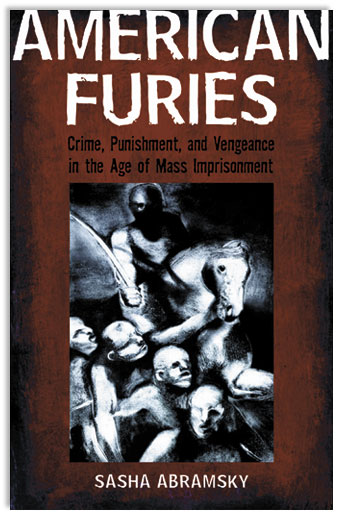Heartbreak Hotel
American Furies: Crime, Punishment, and Vengeance in the Age of Mass Imprisonment
Sasha Abramsky is angry about how many people are locked up in this country, and how much money is spent keeping them behind bars. He recoils at a penal system that has lost sight of its original purpose, to rehabilitate convicts and return them to society.
The journalist and author believes, as his book title suggests, this fury should be shared by the nation. As the country’s undisputed leader in executions, and home to one of the nation’s largest prison populations, Texas surely can stand to consider Abramsky’s point.
The politics and folly of criminal justice are familiar ground for Abramsky, and his latest book is not a riveting tale. It is statistically dense, slow reading. Its value lies in making us consider why we do what we do, how we came to this point, and why it’s important to trace history’s longer arcs.

Since 1980, Abramsky writes, the nation’s prison population has grown from 475,000 to more than 2 million. He takes us on a tour of the politics and cultural transformations behind those numbers. He begins at the beginning, with a history lesson on incarceration in the United States.
Unlike the overcrowded holding pens of today, prisons in 18th century America were created as an outreach of the Enlightenment. In an age when most criminals could expect corporal punishment, deportation, or death, Pennsylvania Quaker Benjamin Rush pushed the radical notion of vast institutions to imprison and reform large numbers of convicts. Instead of the state meting out brute punishment, Rush believed, it could use honest work to help rehabilitate prisoners. “The bridewells and workhouses of all civilized countries prove that labor is not only a very severe, but the most benevolent of all punishments, in as much as it is one of the most suitable means of reformation,” Rush told the American Philosophical Society in Philadelphia in 1786.
Rush’s prison-labor model suffered greatly in the post-Civil War South, where large numbers of blacks were imprisoned under flimsy pretenses and put to work as cheap labor to rebuild a crumbled infrastructure. Not until the social upheavals of the 1960s did courts begin backing prisoner rights, and politicians try to implement rehabilitation programs. Prison reforms and anti-poverty legislation continued until the national malaise following Vietnam. The country’s urban poor and disenfranchised grew. The optimism of the 1960s Great Society deflated, and middle-class America called for harsher punishments that would sweep lower class drug offenders under a prison rug, out of sight and out of mind.
Eager to appear tough on crime, politicians escalated the national war on drugs, flooding the nation’s prisons with nonviolent inmates. With budgets cut for state mental hospitals, prisons became repositories for poor drug offenders and the mentally ill. Inflamed by sensationalist news channels and radio shock jocks, the public clamored for ever-harsher punitive measures, swelling the U.S. penal population to the largest in the world-larger both as a percentage of the population and in absolute numbers.
Allen Ault, program director of the U.S. Department of Justice’s National Institute of Corrections from 1996 to 2003, says in the book that, “Research plays little part in state corrections. Crime is back down to the 1970s level, yet the inmate population still rises. So there’s no correlation between crime and the inmate population. We don’t do things by research and facts. We do things by politics.”
For insights into politically motivated harshness, Abramsky repeatedly cites Texas. “We don’t have any poor people. They’re invisible,” says Jim Estelle, former director of the Texas Department of Criminal Justice. “Prisons really are a microcosm of the community that produces the prison population. If you’re White Anglo-Saxon Protestant and rich, you aren’t going to prison. We do stupid things, and it’s politically driven, clear and simple.”
American Furies is a prolonged, scholarly essay whose ultimate home will be in university classrooms. Occasionally, Abramsky interjects personal opinion in unfortunate distractions. He writes about prison chain gangs: “The hypocrisy is so raw it literally takes my breath away.” Such clichéd observations come across every bit as self-righteous as the inflammatory talk show hosts Abramsky denounces. As with most reform advocates, Abramsky is most persuasive when he lets facts speak for themselves.
As the public learns of the war on drugs’ quixotic nature and economically crippling effects, some politicians are looking into punishments other than incarceration for nonviolent offenders. In the 2007 legislative session, Texas lawmakers set aside some money for treatment and rehabilitation programs. Former New Mexico Gov. Gary Johnson recently raised the possibility of legalizing certain drugs; he argued that state funding for treatment and education might be more effective than paying for more prison beds. Regarding the ever-shifting winds of imprisonment philosophy, former Justice Department official Ault observes, “If you look at the history of corrections, it does go in cycles. It usually goes from overcrowding and scandal to reform. Hopefully I’ll live long enough that the pendulum will start swinging the other way.”
Stayton Bonner is a freelance writer in Austin.


